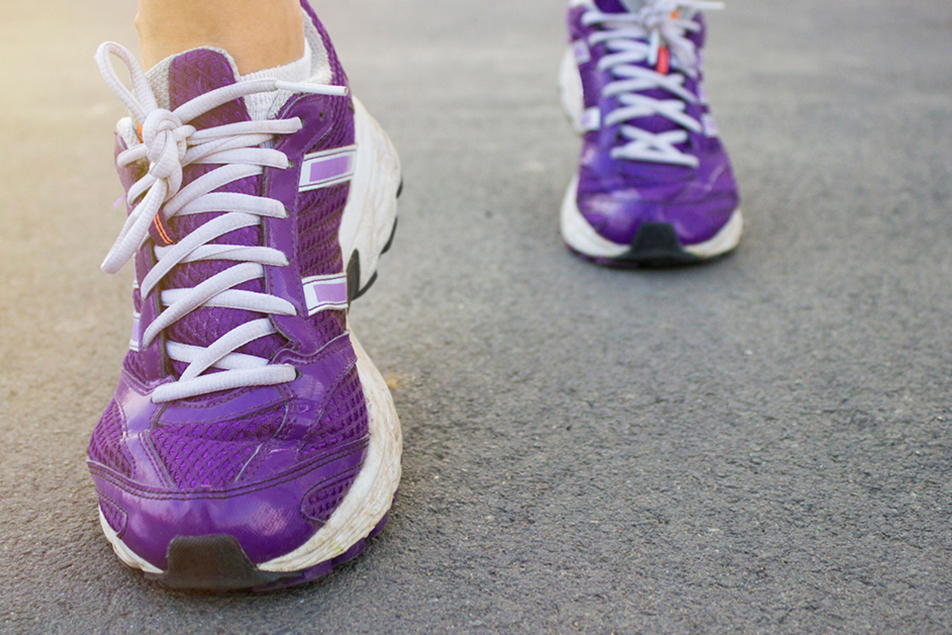Spring brings a surge of outdoor activity, training season for races and adventure games, and a lot more walking in general. Shawn Richardville, lead exercise specialist, Parkview Health and Fitness Center, talks about the importance of quality footwear for injury prevention and proper form.
Whether you are thinking about beginning an exercise program, or you’re already an exercise warrior, having a quality pair of shoes is highly recommended, and absolutely worth the investment. Your feet are the base of your body movement, so any alignment issues at the base will most likely create issues at the knee joint, the hip joint, and into the lower back. Having a quality pair of walking/running shoes is the first step in injury prevention or possible correction.
A quality shoe for distance walking/running should have a slight heel elevation to reduce stress on the Achilles tendon. It should also have a larger toe box and more shock absorption. One big problem with walking/running is over-pronation of the foot, otherwise known as flat feet or having fallen arches. There are a number of various shoes that are made to accommodate each type of foot arch, so your first step is to figure out your arch type or pronation.

Use the Internet to your advantage. Browse testimonials and ratings for shoes for your particular type of foot arch. There are also some shoe retailers in town that can assess your walking/running gait and recommend an appropriate shoe.
When purchasing new shoes, consider …
- The quality of a shoe midsole will start to decline after 350 to 550 miles.
- The wear on the sole of the shoe does not necessarily reflect the loss of shock absorption.
- You should have about a finger’s width of room from the end of your longest toe to the front of the shoe.
- Try to buy your shoes later in the day. Your foot will expand after bearing weight throughout the day.
- Wear the same socks you plan on walking/running in. Sock thickness will affect the fit of your shoes. Also bring along any orthotics if you wear any.
- As an alternative to cotton socks, you may want to try socks made of synthetic fibers that can wick away moisture from your feet.
- Buy a shoe that feels comfortable. If it doesn’t feel comfortable when you are buying them, it’s not going to feel any better a week later.
- If you currently have a pair of running shoes that have not given you any problems in the past, you might want to try to stick with the same brand and model.
- If you wear your shoes for walking/running exercise sessions only, they will last much longer.
- Never walk/run a long distance event (10+ miles) in a new shoe. Your shoes should have at least 50 miles on them to be broken in.




